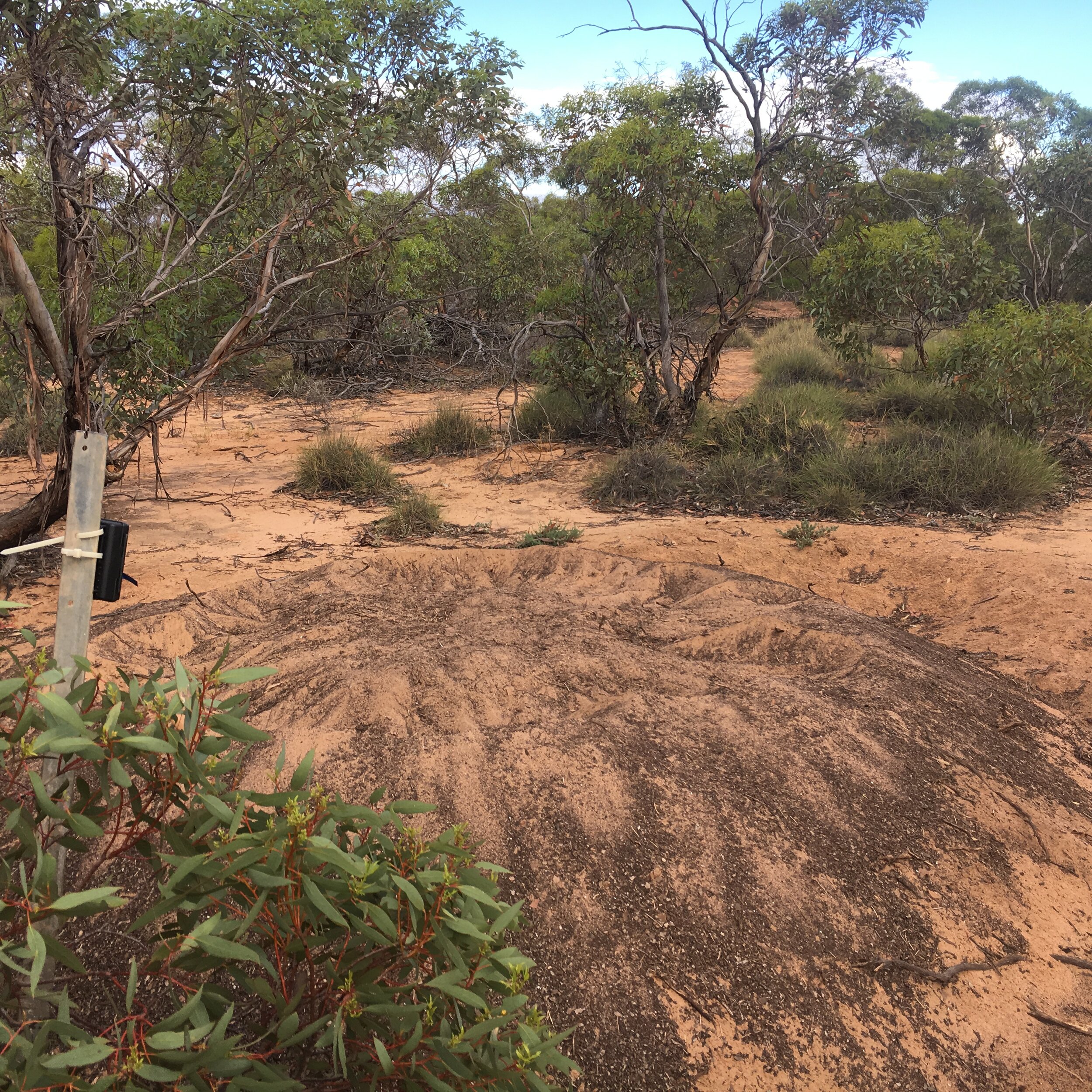The property is home to at least 20 active MalleeFowl nests.
Malleefowl populations are mainly restricted to significant patches of vegetation in national parks, state forests and Flora and Fauna Reserves in North Western Victoria. They can also be found in isolated areas of adjoining private and public land such as the Hattah Bush Block.
Malleefowl are listed as vulnerable under the Federal Environment Protection and Biodiversity Conservation Act 1988. They are at risk from introduced predators, overgrazing of understory, fragmentation of suitable habitat and extreme climatic events such as bushfires.
Photo: India Kemp
Fox on nest
Status of Malleefowl on The Property
Malleefowl density
Recent bird surveys indicate that the property supports a high density of malleefowl with a significantly higher rate of breeding activity than the adjacent Murray-Sunset National Park and Hattah-Kulkyne National Parks over the same period.
“During the survey period, I observed six malleefowl during the 60 km of transects. Due to the rarity and the cryptic habit of the malleefowl, this is a very high rate of detection that is rarely achieved during similar surveys across other parts of the Malleefowl range in both Victoria and South Australia. Recent surveys that I have undertaken in Murray-Sunset and Hattah-Kulkyne National Parks have resulted in a mean reporting rate of one individual for every 120 km of transects surveyed. Therefore, considering this data I infer that the malleefowl density is somewhere between 10-15 times higher on the property than in the adjacent National Parks”.
S Verdon 2019
Malleefowl breeding activity
Malleefowl nests can be inactive or active and birds can return to inactive nests. Malleefowl breeding can also vary due to rainfall. More productive woodland areas support more active mounds. Due to the large volumes of leaf litter required by malleefowl to build composting mounds that generate heat for the incubation of their eggs, malleefowl breeding is largely restricted to mature mallee that has not been burnt for at least 30 years (Benshemesh 1990). A period of 30 years is required for sufficient leaf litter to accumulate after a fire (Benshemesh 2007; Haslem et al. 2011).
Malleefowl working their nest
“During the recent bird surveys on the property, I observed 13 Malleefowl mounds, seven of which were active at the time of observation (54%). By contrast, recent surveys that I have undertaken across Murray-Sunset and Hattah-Kulkyne National Parks resulted in 40 mounds, seven of which were active (17.5%). Using this data for comparison, the density of active mounds is ~7.5 times higher in the property than in the adjacent national parks. The greater number of mounds in total that I detected in the national parks compared to the property is due to a greater survey area there (450 km of transects compared to 60 km of transects in the property). In addition to the above, negligible breeding activity has been reported in the Murray-Mallee region of South Australia, north of the Murray River over the last two years (H Neally pers. comm.). The above information leads me to conclude that the property is an area of important breeding habitat for the Malleefowl”.
S Verdon 2019





















